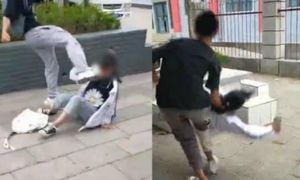Kolkata is once again under the harsh spotlight as it grapples with the aftershocks of the tragic rape and murder of a junior doctor from the renowned R.G. Kar Medical College and Hospital. This gut-wrenching incident, which has sent waves of outrage across the nation, has now entered the courtroom where significant developments are taking place swiftly and with great scrutiny.
On November 18, the statements of two key witnesses were scheduled to be recorded as part of the fast-tracked trial process. Among these witnesses is the judicial magistrate who oversaw the controversial inquiry of the victim’s body—a role deemed pivotal by legal experts. The second witness, the videographer who documented the autopsy and other procedural aspects, is expected to shed light on the events surrounding the discovery of the victim's body. All this is occurring within the confines of a special court, operating under stringent conditions where proceedings are held behind closed doors to preserve the integrity of the trial.
This case first drew public attention on August 9, when the body of the young doctor was discovered within the seminar hall of her college. The details surrounding her death are harrowing; they involve allegations of sexual assault and grave misconduct. Since the initiation of the trial on November 11, several witnesses, including the victim’s parents, have already provided their statements, contributing to the chilling tale of events led to this tragedy.
The courtroom drama intensifies with the presence of three individuals currently detained. Sanjay Roy, described as the “sole prime accused” by the Central Bureau of Investigation (CBI), stands at the forefront as the person allegedly responsible for this heinous crime. The investigation has since switched gears, moving from local police to the CBI following directives from the Calcutta High Court, raising questions about the thoroughness of the initial efforts and whether the right protocols were followed.
Roy's co-accused include Sandip Ghosh, the former principal of R.G. Kar, and Abhijit Mondal, the former station house officer (SHO) of the local police station. Both are facing severe allegations of hindering the investigation and compromising the judicial process through actions such as tampering with evidence. This has led the CBI to hint at potentially adding their names to future supplementary charges as the investigation deepens.
Media attention has been relentless, with reporters lining up outside the court, eager for any hint of the legal proceedings. Recently, as Roy was ushered from the courtroom to his awaiting transport—an inconspicuous vehicle with tinted windows—he took the opportunity to make headlines once again by claiming to have been framed by the former Kolkata Police Commissioner Vineet Kumar Goyal, calling it a conspiracy against him. This claim, whether substantiated or not, adds yet another layer of complexity to the case, as the public and the media continue to sift through the various narratives being spun by those involved.
The fact remains, the judicial process is moving forward albeit shrouded with controversy, and many are left pondering the efficiency of the mechanisms in place to protect individuals from acts of violence such as these. With witness hearings lined up and the public’s patience wearing thin, the demand for justice rings clear throughout the city, echoing sentiments of outrage and the need for accountability.
On the following days, the court is expected to continue garnering testimonies from additional police officers involved in the initial investigation—a process deemed extremely important as some have raised concerns about the handling of the crime scene on the day the victim’s body was found. Reports suggest the seminar hall, where the tragic discovery occurred, may not have been properly secured, resulting in unauthorized individuals gathering at the scene, potentially disrupting the collection of important evidence.
Witnesses are set to include those who were directly involved with the police's initial inquiries, alongside other alleged eyewitnesses to the grim events. The recording of their statements is pivotal not only to the defense and prosecution’s cases but to the grieving family seeking closure amid the chaos of legal battles.
Despite the serious nature of the trial, the path to justice remains fraught with complications. Each statement taken could either advance the case significantly or reveal how deeply ingrained issues may have impeded the pursuit of justice for the victim. The judiciary's decision to hold hearings behind closed doors mirrors the sensitivity of the case at hand, as protecting the identities and emotions of those involved is prioritized alongside the desire for transparency.
The societal reverberations of this case can't be overlooked. The public outcry for justice grows louder, as protests have erupted across the state, with demonstrators demanding action not only against the perpetrators but also reforms within institutions meant to protect individuals against such extreme violence. Many advocates are urging systemic changes to prevent the recurrence of such tragedies, pushing for stricter laws concerning sexual violence and more responsible oversight of the police investigations.
State authorities find themselves at the crossroads, facing scrutiny on multiple fronts. How they navigate the trial and its surrounding controversy will undoubtedly shape public perception of law enforcement and justice delivery going forward. This case serves as both a jogger of internal reflection within the authorities and as a pressing reminder of the vulnerabilities faced by women within society.
Going forward, the court's decisions and the testimonies from the pivotal witnesses could very well shape the narrative of justice surrounding this heart-wrenching case. Families who have watched their loved ones suffer not only seek justice for the atrocities they’ve endured but also hope to rally broader societal change, pushing for accountability, safety, and respect for women everywhere.
Through all the chaos, allegations, and hopes for justice, one thing stands clear: the community’s spirit yearns for change and healing. They are ready to demand accountability until the judicial system rises to meet the grave expectations placed upon it—ensuring the memory of the young doctor is honored with rightful justice.



